

In 1985, when the church celebrated its centennial, Paul Katocs and the current minister Sanford Brown created a 30-page booklet, The History of Our Church, 1885-1985. The majority of the material here is from that publication. It is available as a pdf from our website. See end of this article for links.
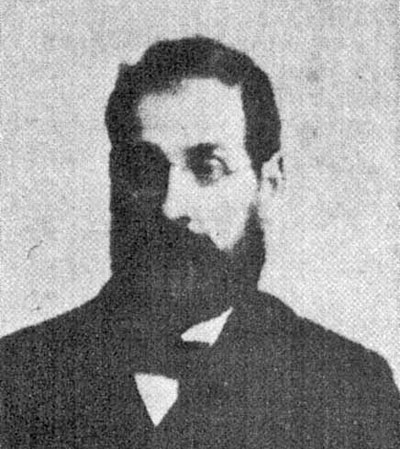
The church was established in 1885 by Rev. Andrew J. McNamee (above), sent by the Methodist Episcopal Church as a traveling minister. On his first visit to Fall City, he preached in the rough board schoolhouse on the north side of the river. When "Brother Mac" was next in Fall City, the schoolhouse had been sold. The decision was made to build a church, and land was donated by Orin Baxter. The arduous story of Brother Mac's clearing the land, rafting lumber downriver from the Kihn mill, drying it and organizing the building of the church is told in the book from his journal, with artist's drawings, such as the one below.
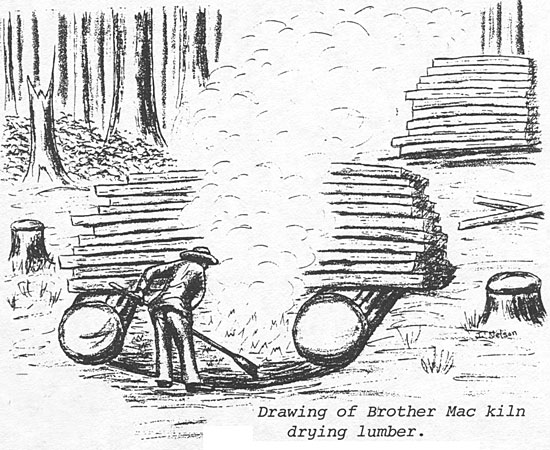
The sad ending to this tale is that Orin Baxter found that he did not in fact have clear title to the land where the church was built, and it was sold. After that, church services were held in the schoolhouse near the Raging River or in the Lyceum Hall, behind the current Masonic Hall. The minister at the Snoqualmie Methodist Church became responsible for the folks in Fall City.
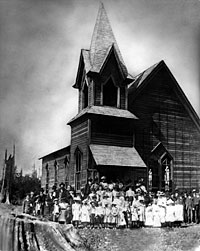 The next chapter begins in 1898, when a Baptist minister, James Morgan, came to preach in Fall City and North Bend. The Fall City community mobilized around Morgan to raise funds and build a church, to be "interdenominational." The photo at right is the 1899 Opening celebration at the new church, which was located at the northwest corner of the intersection of Main Street (now 337th SE) and Third Street (now SE 43rd Pl).
The next chapter begins in 1898, when a Baptist minister, James Morgan, came to preach in Fall City and North Bend. The Fall City community mobilized around Morgan to raise funds and build a church, to be "interdenominational." The photo at right is the 1899 Opening celebration at the new church, which was located at the northwest corner of the intersection of Main Street (now 337th SE) and Third Street (now SE 43rd Pl).
The Baptist membership was unable to pay the remaining debt from building the church, and in 1919 the building was purchased by the Methodists, with a $250 grant from Methodist Episcopal Board of Home Missions in Philadelphia, with the stipulation that the church be named "The Mary Ware Benedict Memorial Methodist Episcopal Church." Most of the local Baptist members chose to join the Methodists and continue worshipping at the church. In 1910 a two-story addition was made at the rear of the church, to provide space for Sunday School.
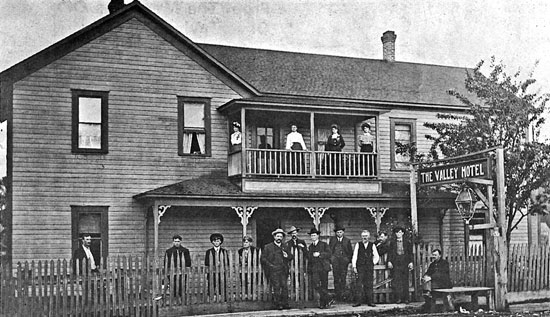
The Valley Hotel, shown above in 1906, was built in 1890 and located near the current site of the Methodist Church. It burned down in 1910 and was never rebuilt. Around 1927, the church purchased the lot where the hotel had been, and in 1929, the church building was rolled across the street on logs to this site and turned so that it still faced Main Street.
The photo below is sometime after the church was moved and before the later remodeling began.
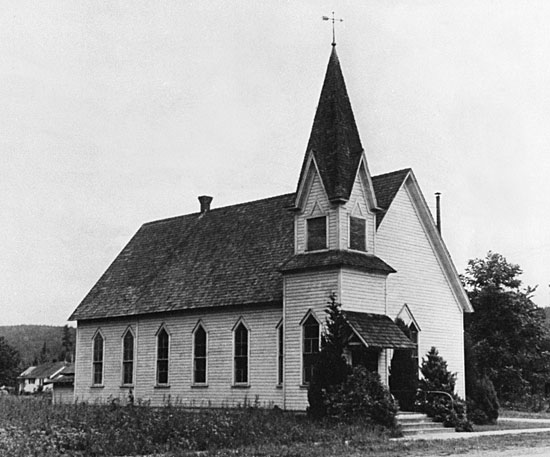
Rev. Ernest Barber became minister in 1954 and brought his energy to needed changes for the church. The Sunday School was in desperate need of additional classroom space, the church had always been in need of a Social Hall for informal functions, and everyone had a desire for a kitchen and indoor plumbing. The Education wing has completed by 1958, much as it is today.
1958 saw in another period of change, as Rev. George Pratt was appointed to the church - thus beginning the longest single pastorate of any minister in Fall City. Major building changes were made, including reversing the orientation of the sanctuary and doing an extensive remodel in that area and creating the balcony/choir loft area. (Photo below taken in 2006.)
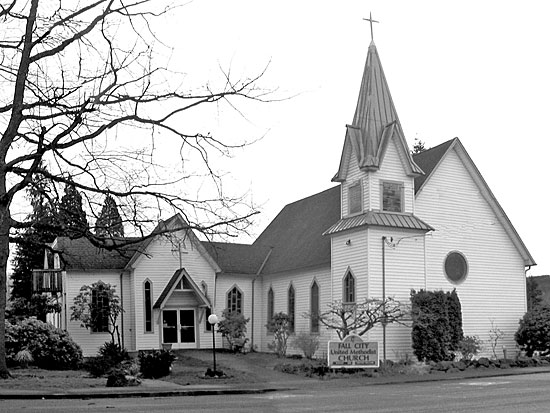
Rev. Pratt's most memorable contribution grew from the staging of an Easter Pageant in 1958 that grew into the famous Fall City Passion Play. Rev. Pratt, along with Henry and Dorothy Eaton, wrote the initial script, which served for many years. Performances were held in the Fall City Gymnasium, and later in the Christian Players Park (now Snoqualmie Falls Forest Theater). Showings continued until the late 1980s, having been enjoyed by well over 60,000 people. In 1965 the Seattle Post-Intelligencer published a colorful article about the Fall City Passion Play....See end of this article for link. (1978 program page shown below.)
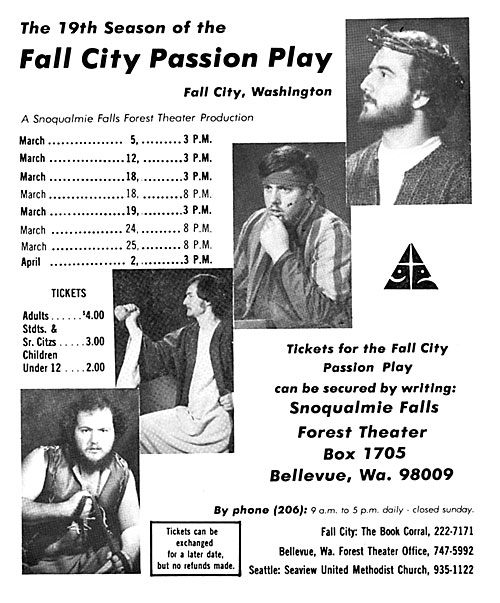
Changes and progress were seen under several subsequent ministers, with 1980-1985 being a very active period, with renovation of all of the newer facilities, improvements in landscaping, a new electronic organ and piano, and stained glass windows, including the round Centennial Window high on the west wall. See link at end of this article for more on the stained glass windows.
The church continues to play an important role in the community. In addition to offering traditional and contemporary worship services, a widely renowned Bell Choir and a welcoming setting for weddings, memorial services and other gatherings, the building provides space for many groups including the Fall City Community Food Pantry, several AA chapters and the Fall City Historical Society. It has served as a Winter Shelter for the Homeless and is a designated Red Cross location in times of community emergencies.

Additional Materials below are available as pdfs.
These pdfs are also available on our web site if you are unable to view them on your phone and wish to view them on a full screen.